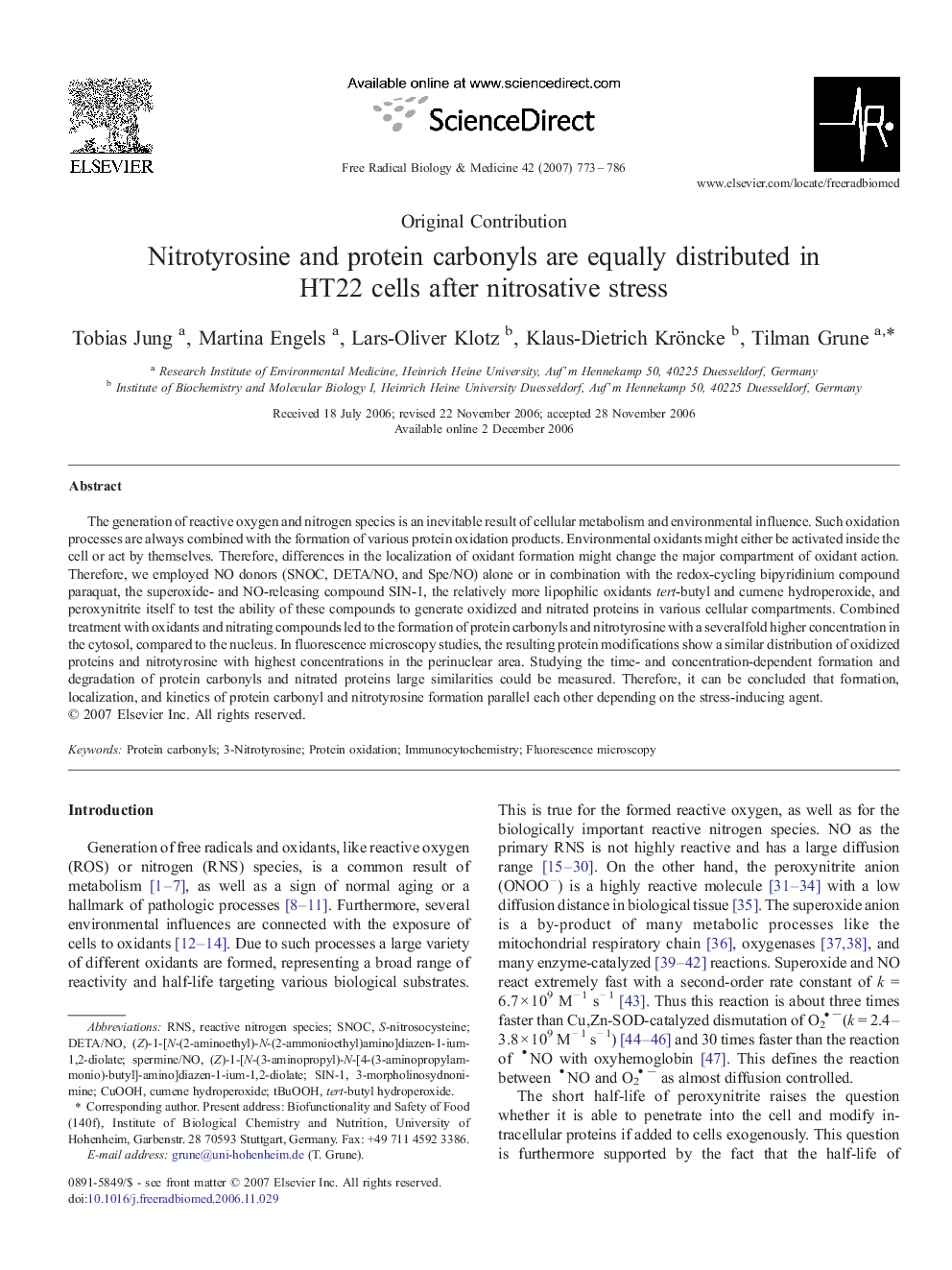| Article ID | Journal | Published Year | Pages | File Type |
|---|---|---|---|---|
| 1910609 | Free Radical Biology and Medicine | 2007 | 14 Pages |
The generation of reactive oxygen and nitrogen species is an inevitable result of cellular metabolism and environmental influence. Such oxidation processes are always combined with the formation of various protein oxidation products. Environmental oxidants might either be activated inside the cell or act by themselves. Therefore, differences in the localization of oxidant formation might change the major compartment of oxidant action. Therefore, we employed NO donors (SNOC, DETA/NO, and Spe/NO) alone or in combination with the redox-cycling bipyridinium compound paraquat, the superoxide- and NO-releasing compound SIN-1, the relatively more lipophilic oxidants tert-butyl and cumene hydroperoxide, and peroxynitrite itself to test the ability of these compounds to generate oxidized and nitrated proteins in various cellular compartments. Combined treatment with oxidants and nitrating compounds led to the formation of protein carbonyls and nitrotyrosine with a severalfold higher concentration in the cytosol, compared to the nucleus. In fluorescence microscopy studies, the resulting protein modifications show a similar distribution of oxidized proteins and nitrotyrosine with highest concentrations in the perinuclear area. Studying the time- and concentration-dependent formation and degradation of protein carbonyls and nitrated proteins large similarities could be measured. Therefore, it can be concluded that formation, localization, and kinetics of protein carbonyl and nitrotyrosine formation parallel each other depending on the stress-inducing agent.
